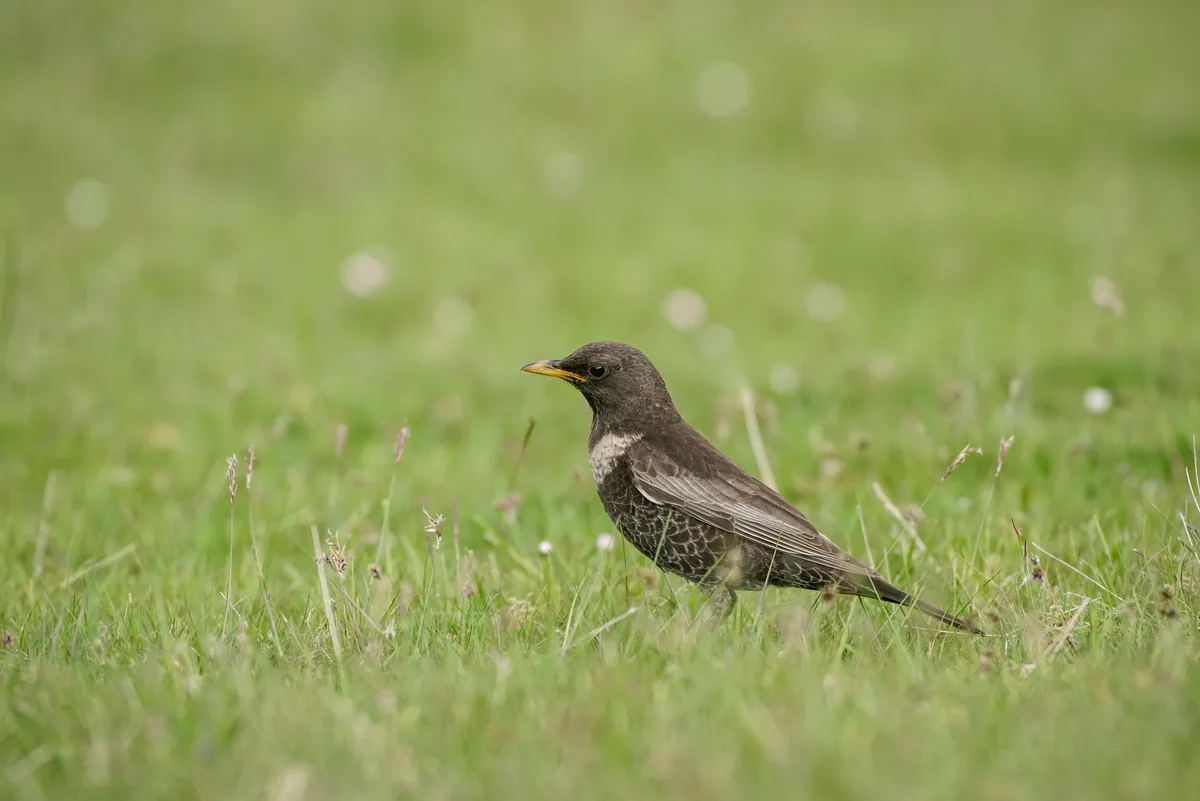How to identify ring ouzels
Not to be confused with the blackbird, the ring ouzel is slightly smaller and is longer-tailed.
Particularly distinctive is the male with his pale wing panels and black plumage contrasting with a white gorget (a white crescent on the upper breast).
The female’s appearance varies from a very bright breast band to a scarcely visible one. This often depends on the age as the older female birds tend to have a brighter and more defined colour.
When can ring ouzels be seen in the UK?

The ring ouzel is a summer migrant to Britain visiting to breed between March and September. The best time to see them is in April and in October in upland areas such as in Scotland and northern England where they inhabit open moorland and crags at high altitudes.
In the autumn, the ring ouzel migrates to its wintering grounds in the mountains of Morocco and Tunisia in north-western Africa, moving away from its breeding grounds. Globally, they are listed as of ‘Least Concern’ as the ring ouzel is only declining in Britain.
What do ring ouzels eat?
An omnivorous bird, the ring ouzel’s main diet consists of insects and berries. In the spring it prefers earthworms, and in the autumn and winter, juniper berries. In fact, the migration route of the ring ouzel follows where juniper berries grow.
Are ring ouzels threatened?
Between 6,200 and 7,500 pairs of ring ouzels breed annually in the UK but the population is decreasing. In Britain they are of high conservation concern and are classified as Red Listed due to their 43 per cent population decline in the last 40 years. It is suspected that this decrease is related to ongoing changes to their British habitat.
What is the scientific name of the ring ouzel?
The ring ouzel's scientific name, Turdus torquatus, has Latin origins. The first part, ‘Turdus’, stands for thrush as the bird is a member of the Turdidae (thrush) family, which also includes blackbirds, redwings, fieldfares, mistle thrushes and song thrushes.
The second part comes from the Latin ‘torquis’, meaning collar, referring to their white breast bands.
Main image: A male ring ouzel in North Yorkshire, UK. © Jean Voiculescu/500px/Getty
